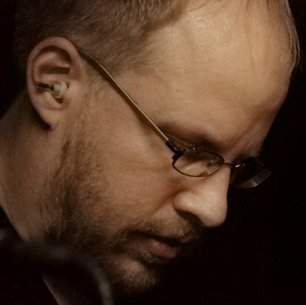I’ve been running around so much I haven’t had time to post before now, but I’m at least keeping my promise to give you an update at some point. We got here on Wednesday night (I suggest getting a four day pass if you can afford the time and cost, as there is a lot to see and do), and on Thursday got started, a bit later than I had intended (what can I say? I’m just not in the morning person category), with friends Shoshanna and Jerad. (These people, by the way, are great. Not only are they long-time friends, they’re extremely knowledgeable readers, and according to them they’ve got all of Louisville salivating over the arrival of The Third Sign–to which I can only say Go Cardinals or Wildcats, depending on your allegiance. You folks are the best.)
Our first start was the exhibition hall, which is always the heart and soul of this convention. If you’ve ever been in a game or bookstore and been impressed by the selection, er, multiply that reaction by twenty. At least. There are hundreds of displays, demos and of course sales booths dealing with everything from old school standing video arcade machines (I set the high score on the Galaga display–still have a bit of the old mid-eighties touch, lo these many years and quarters later) to t-shirts (favorite so far: “They got the Library at Alexandria–they’re not getting mine!”) to art displays, game demos, and (naturally) Author’s Alley, where us literary types spend a lot of time hanging out. I got to speak to Jim Hines for a while, who was signing copies of his Goblin book series, and met Paul Genesse, a fellow Five Star author whose marketing ability is, well, absurd. He’s become the best selling author in Five Star’s history, and he was kind enough to sit down with me for the better part of an hour to talk shop and trade promotional ideas, including how to track down the best artist for the book cover (apart from what’s within the covers, the cover photo on his book The Golden Cord is absolutely stunning).
Around mid-day I swung by the panel “Painting With Words,” where Kerrie Hughes, Anton Strout, Pat Rothfuss and Dylan Birtolo (with whom I was on a later panel) walked the audience through their various experiences as authors and editors in terms of producing and analyzing prose style. Pat was his usual engaging and funny self in keeping the rest of the panel on task, mostly using his Hand of the Moderator (TM), and I had the chance to talk to him a bit as well. Dinner followed with Paul, Kerrie, Jim, my editor John Helfers and others, and along with a lot of productive publishing talk (John is pretty excited about the TTS book-to-video game conversion process, and after talking to authors and gamers here I’ve gotten pretty excited about it myself–this is apparently a bigger deal than I had even expected) I got to see how Jim handles himself when under constant friendly attack from his editors. The answer has something to do with Care Bears, but I’ll let you all ask him about that yourselves. 🙂 Finally we went back to the hotel to play a game or two and relax.
Friday again involved a lot of book work, including panels with Michael Stackpole and other writing big shots in the industry, more time in the exhibition hall, and conversations with artists. The latter was perhaps the most interesting part of the day, because Paul got me so fired up about the “cool cover idea” that I spent much of the rest of my time in the exhibition hall talking to people who might be right for TTS work. I note three things from this experience:
1. There are a lot of artists.
2. There are a lot of really good artists.
3. There are a lot of really good and pleasant artists.
Most of my conversations were with the third category, and I’ve got three very promising leads now to pursue over the next few months.
I’ve got some other thoughts about some of the people who were marketing literature and art here, but I’ll save them for my next entry on days three and four. One final comment for now: perhaps the most interesting thing I heard from the panels I attended these first two days is that the publishing “fad” is a dangerous one, and chasing it is the surest way to get yourself frustrated in a hurry. Write what you find interesting first, and then consider the market to which you can apply it. I knew this already to a degree, but I’ve heard it repeated here so often that it’s clear that avoiding the boom / bust cycle is important. In other words: write not just what you know, but what you love. It’s an important lesson for us all to keep relearning.
And now to bed–I’ll have more upon my return in a few days.
Greg

